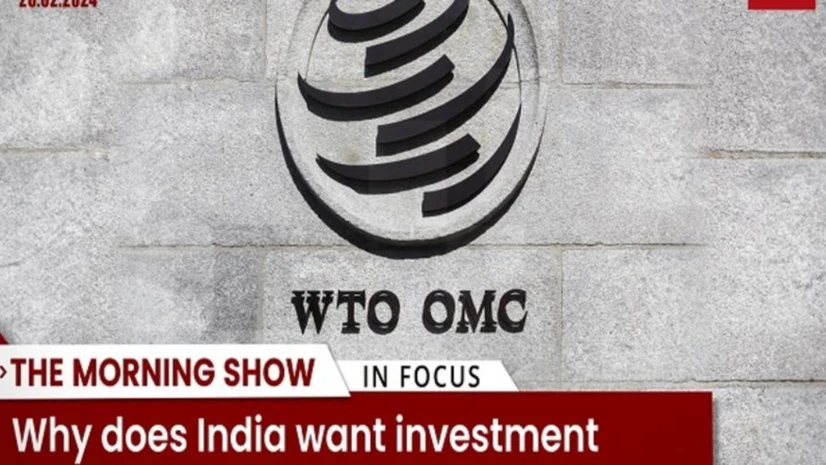Chinese President Xi Jinping has drawn a clear red line in a bid to stem new US exports controls, threatening to reignite a tit-for-tat trade spiral with Donald Trump just weeks before a planned meeting between the leaders of the world’s biggest economies.
After China unveiled wide-ranging global export controls on products containing even traces of certain rare earths this past week, Trump fired back by threatening to cancel a planned in-person meeting with Xi — their first in six years. The US leader also announced plans to double tariffs on Chinese goods to 100 per cent, along with sweeping curbs on “any and all critical software.
On Sunday, Beijing justified its moves as defensive actions and accused the US of introducing new restrictive measures targeting China since talks between the two in Madrid in September. Last month, the US Commerce Department unveiled a dramatic expansion of its export controls, which closed loopholes in current measures to block Beijing from cutting-edge chips.
“Willful threats of high tariffs are not the right way to get along with China,” the Commerce Ministry said. “China’s position on the trade war is consistent: we do not want it, but we are not afraid of it.
China’s firm response shows both sides continue to disagree on the terms of a truce struck back in May, when they agreed to lower tariffs from levels that rose well beyond 100 per cent. Whereas Xi saw the agreement as a freeze by both sides on any new curbs on critical shipments or restrictions on companies, the US appears to view the truce as limited to reduced tariffs in return for unhindered flows of rare earth magnets.
The question now is whether both sides can again come to an understanding before tariffs rise to levels that again threaten to usher in a wider decoupling between the US and China. Markets recoiled on Friday, with US stocks suffering their worst selloff in six months, while commodities including soybeans, wheat, copper and cotton all fell.
“We will not be intimidated by such coercive and unilateral actions of power politics,” said Zhou Mi, a senior researcher at the Chinese Academy of International Trade and Economic Cooperation, a think tank under the Ministry of Commerce. “Our actions have clearly shown this.”
Also Read
Both sides have left room for deescalation. Trump’s tariffs are slated for Nov 1, days after the expected meeting with Xi at a summit in South Korea. China’s new controls are set to begin taking effect a week later, shortly before the latest trade truce holding back tariffs as high as 145 per cent expires.
Export controls on technology and magnets critical to artificial intelligence and weapons manufacturing are at the heart of trade negotiations between the world’s biggest economies.
After Trump hit China with 145 per cent tariffs in April, Xi blocked US firms from buying its magnets, sparking factory closures and panic over the nation’s dependence on Beijing for metals vital to national security. If the US leader hikes tariffs again, Beijing could reimpose that blockade bringing both sides back to a battle of which superpower can withstand more economic pain.
“Washington’s fear of China is strategic, not economic,” according to analysts at Hutong Research, an independent analysis firm. “A disruption in rare earth flows threatens defense production capacity, a core pillar of US global power projection and, by extension, dollar stability.
The latest showdown underscores the difficulty for two rivals to strike a trade deal. Chinese negotiators have reportedly dangled a huge investment package to Trump’s team, but such capital flows would likely be blocked by US national security controls. The fallout could also jeopardize a deal for China-owned social media giant TikTok’s US operations, which US lawmakers have previously opposed over security concerns.
Ultimately, the US will find the escalation and any collapse of the TikTok deal harder to bear than its rival, according to CF40, a Beijing-based economic think tank, which said China could hedge against higher US tariffs with policy support.
The Trump administration relies on TikTok to woo young voters, and with political pressure from the 2026 mid-term elections it has limited scope for extreme measures,” the organization wrote in a Saturday paper. “Inflation and shortages that tariffs are causing in the US will be hard to alleviate in the short term.”
Chinese exports have hit new records in many markets this year, showing Beijing can survive without the US consumer. Data due Monday is expected to show the factory engine surging ahead again, giving Xi more breathing room. Still, a huge spike in tariffs would put more pressure on an economy already battling weak domestic demand and deflationary pressures.
Officials from both sides could sit down again as soon as this week, when a team from China heads to Washington for a regular round of meetings with international finance chiefs. Officials from Beijing could face pushback there from global counterparts, as its latest rare earths curbs are not limited to the US, threatening to also disrupt European and Asian firms.
The renewed brinkmanship revives fears of a deeper rupture in global trade that could push the two economies toward partial decoupling. Markets recoiled on Friday, with US stocks suffering their worst selloff in six months, and commodities from soybeans to wheat, copper and cotton all falling.
What Bloomberg Economics Says ...
Bloomberg Economics estimates that a 100 per cent US tariff hike would push effective rates on Chinese goods to around 140 per cent — a level that shuts down trade, not just raises costs. While the current 40 per cent rate — 25 percentage points above the world average — is challenging, China’s manufacturing edge has kept exports flowing. Tariffs above 100 per cent would sever most flows.
Chang Shu, Chief Asia Economist
Ultimately, the endgame will likely involve some form of negotiated settlement, said Ray Wang, lead semiconductor analyst at The Futurum Group. “The economic, security and supply-chain stakes for both sides are simply too high to sustain the current standoff indefinitely,” he added.
Earlier this year, China used its dominance of vital rare earths to help force Trump into easing export controls on certain goods to the Asian nation. Xi’s team could push the US for a similar climb down in their next round of talks.
Hu Xijin, the former editor-in-chief of state-run tabloid Global Times, described the rupture in recent days as a “turning point” in China’s relationship with the US, as it wields its leverage in rare earths to hold back chip curbs.
“This year, the Trump administration imposed tariffs on Chinese products several times without even consulting us. Sanctioning our companies was done just as casually,” he wrote on X. “China will use its strength to prevent the US from crossing the line.

)
